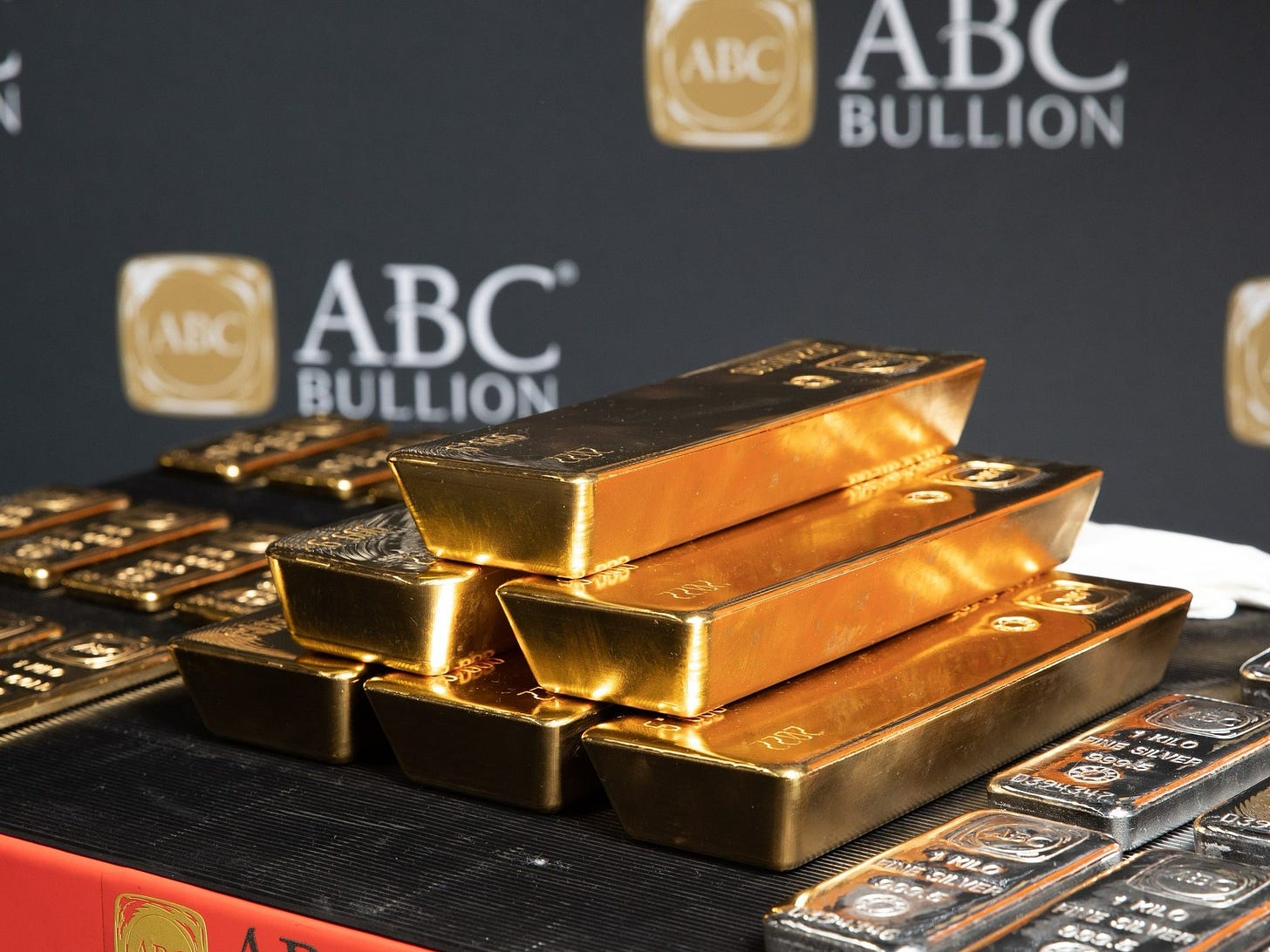Has Gold Finally Gone Mainstream?
Everyone’s ‘gold curious’ now but not necessarily buying yet
A panel of investment professionals have made the case for why the current bull run in gold is part of a structural shift.
“I saw a great comment a couple of days ago about gold, that it might be tactically overbought, but it’s still strategically under owned. I think that’s probably a pretty decent way of summarising where we are,” ABC Bullion general manager Jordan Eliseo told a gold panel during the International Mining and Resources Conference in Sydney on Tuesday.
“If you look at a handful of technical indicators, the price has really run quite far, and I wouldn’t be shocked to see a bit of a corrective period, but at the same time, if you look at gold allocations within diversified investment portfolios and the like, they’re still very modest by historical standards.
“I think that part of this is a cycle where gold is just the hottest thing on the market right now, and maybe that needs to cool down a little bit, but that actually this is part of a broader cycle where gold is going from something that almost no one wanted to own to something that everyone feels they have to own.”
Over the past few weeks, ABC’s headquarters, in Sydney’s Martin Place, has faced queues of people around the block lined up to buy gold and silver.
The queue was reportedly four hours’ long on Monday.
“The lines that you see outside our store, not just in Martin Place, but nationwide, it’s just the tip of the iceberg, because the number of people transacting online, the number of people transacting over the phone, actually dwarfs the number of people who come into the stores,” Eliseo said.
Eliseo said the view of gold among mainstream professional investors had also changed.
“I actually think what we’ve seen now in the last couple of months is the genuine awakening, the broadening of gold into a mainstream investment again,” he said.
“That’s not to say everybody’s going to buy.”
Eliseo pointed to a recent consumer survey in Australia that showed only 9% of people thought now was the right time to buy gold.
“Now, the proper top of a bull market cycle, that number will be more than 50% right? Every everyone’s gold curious now, which is different to saying everyone’s buying now.”
De-dollarization
Barton Gold (ASX: BGD) managing director Alexander Scanlon said he believed a long-term, structural reordering of the global monetary system was underway.
“Fifty years of marginalising gold in favour of the dollar is now being unwound, and it’s being definitively unwound,” he said.
“The little kids, geopolitically, are now the angry teenagers, and they’ve banded together around China, who is now one of the largest gold producers in the world, has far more gold than they publish officially, buys far more gold than they publish officially.
“They have mounted, for the first time, the first credible, sustained and successful challenge to the US dollar hegemony.”
Scanlon said a significant part of the energy market had already been de-dollarized.
“And the news a few weeks ago, that BHP is going to be forced to accept 30% payment in yuan is essentially the expansion of de-dollarization. Iron ore is basically the second largest market in the world and that’s a sign that de-dollarization is spreading,” he said.
“We are in, I think, a period where many, many, many nations around the world have maybe tolerated the US dollar-driven system, and therefore had to then adhere to banking regulations, which are incredibly onerous, and are now saying, ‘well, China’s emerging as a second opposing currency. China can do things for me. The US appears to be a less reliable long-term ally than I thought they were five or 10 years ago. I’m not going to stand against the US, but maybe I’m not going to stand so close to the US, and that being the case, maybe I don’t recycle all of my trade surpluses in US Treasuries. I’m going to be trading with people who also don’t want so many US dollars’.”
Gold touches new record
On Monday, the gold price reached a fresh record high of just over US$4380 an ounce, before pulling back on Tuesday.
Investment banks’ forecasts have struggled to keep up with the rapid rise in price, but the past few days has seen a fresh batch of upward price revisions.
“We expect gold to reach US$4900 by the end of 2026, driven by continued central bank buying and renewed investor demand on the back of Fed cuts—but there could be significant upside beyond those levels,” Goldman Sachs Research commodities strategist Lina Thomas said last week.
Meanwhile, RBC Capital Markets commodity strategist Christopher Louney revised his Q4 price forecast up to US$4227/oz and his 2026 forecast up to US$4427/oz, with high case scenarios of US$4963/oz in Q4 and US$5108/oz in 2026.
“Gold may look like a stretched and crowded trade, but uncertainty abounds against a supportive macro backdrop and necessitates another revision higher,” he said.
“Based on our conversations with investors, we think allocations to gold are moving higher still and there is general comfort in letting gold exposures run as a share of the average investor portfolio.
“Why? Uncertainty underpins not just the sentiment we have encountered, but most of the gains year-to-date in our view.”
Louney cited political uncertainty, trade and tariff uncertainty, Federal Reserve independence, and general fears around economic growth and inflation as playing a role.
ANZ Research revised its gold price forecast to US$4400/oz by year-end, with a peak expected near US$4600/oz by June 2026.
“A gradual decline through H2 2026 looks possible as the Fed ends its easing cycle and the outlook for US economic growth and trade tariffs becomes clearer,” it said.
Canaccord Genuity lifted its 2026 gold price forecast by 13.9% to US$4315/oz and revised its long-term (2029) forecast by 13.7% to US$4745/oz.


